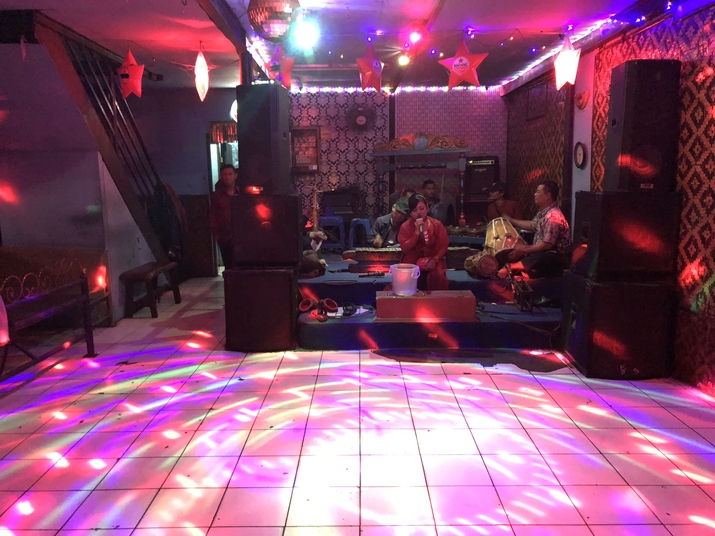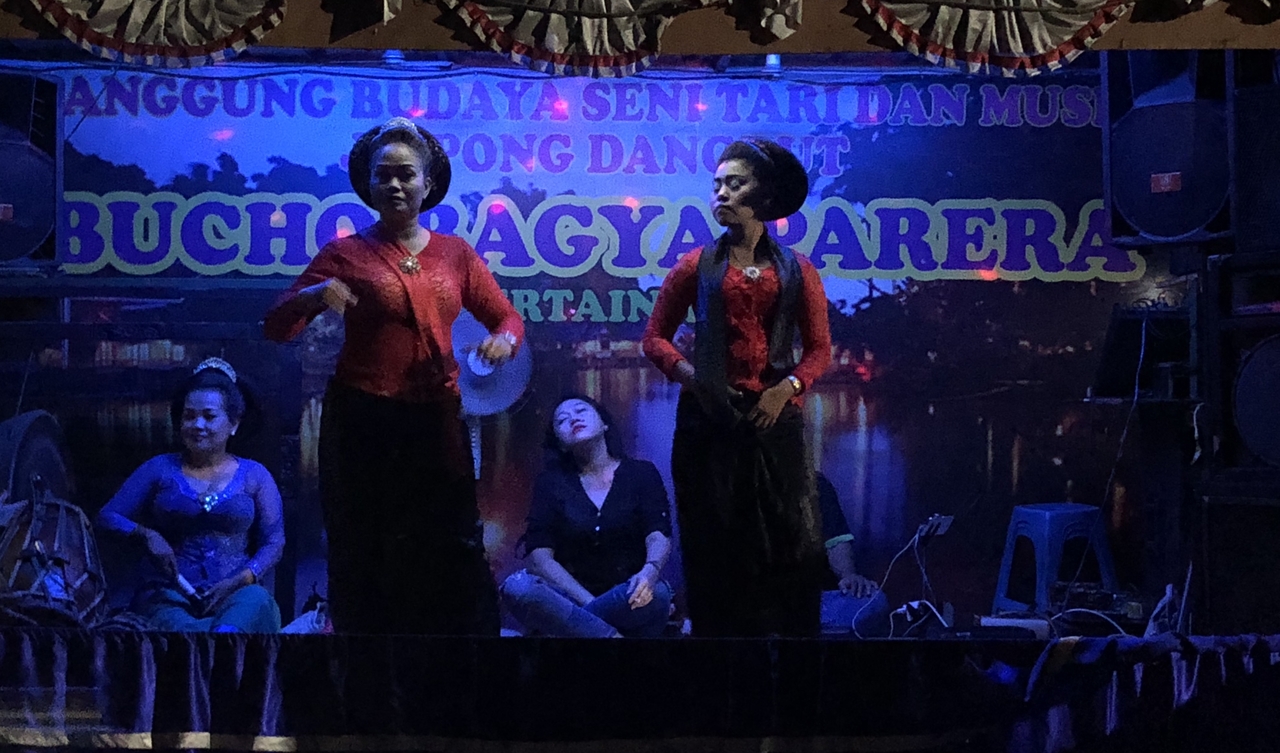
Foto: Giulia Bencini
It was almost two weeks after the official national celebration of Indonesian independence when I met
Gigi Priadji for the first time. He was going to try and find a réak show at Jatinangor, in the regency of Sumedang, at the border with Bandung. He was also willing to help me see my first réak performance ever. While on the back of his motorbike, watching him slowly and gracefully exploiting every free centimeter of the gargantuesque traffic jam through a wall of exhaust’s exhalations, to push us forward in the two-hours-nine-kilometer journey, we had the occasion to talk quite a lot about Priangan and Sundanese celebrations.
I expressed him my thoughts and doubts about going from
desa to
desa, from
kampung to
kampung, asking if we could find any performance to watch, mainly linked to the fact that in our culture, for most cases, it would have been way less than polite to self-invite to something so private; at least for an outsider. Nevertheless, it was a way to discuss my fear of being rejected by the community. He was positive that, in the end, not only I would have been accepted without any doubt, but that I would have ended having to participate and, specifically, I would have had to dance with the locals.
When we arrived at the party, the réak show was over, but a
kuda silat performance was taking place. I was baffled, watching the group play a very contemporary, metal version of classic
kuda silat tunes, while the performer was staging at the center of the pit, the simple but hypnotic combination of dance movements and pencak silat moves’ impressions against his visibly terrorised animal counterpart. While watching, completely swallowed by the show, I was approached by a guy who, probably in
bahasa Indonesia, the national language, asked me to dance. I did not understand immediately, since I did not know a single word of Indonesian, but seeing him point at the center of the pit, I politely refused. Fact is, I got pulled by the man straight into the party. Suddenly I had a crowd of people yelling and screaming at me. All of them wanted me to dance and so I did.
Maybe it is superfluous to say, but Gigi was right. In Priangan you can’t refuse to dance. In Bandung dance is a fundamental part of social and ceremonial life. Dance is not simply a way to participate, but also a more subtle way to communicate and “act” within a group of people. To dance means to accept the invitation and to thank everybody for the wonderful party. Taking part in a dance means honoring the ones who organized the event, while, on the contrary, refusing to is usually interpreted as a despicable action by one of rude manners. If you want to sit apart from the group, you’ll have to invent some very good excuse, as any other answer will have you dragged straight to the pit.
This whole introduction was something I needed to start talking about one of the most incredible and entertaining musical art forms you will find across Indonesia developing around the fine art of public dance:
jaipongan. This secular performance art allegedly created after a twelve years study on Sundanese traditional performances by composer Gugum Gumbira Tirasonjaya - during the seventies in Bandung - presents itself as an equally ravaging and elegant mixture of gamelan salendro patterns, polyrhythmic percussive acrobatics, exquisite choreographed body language and groovy party ambiences.
Jaipongan is famous throughout the archipelago since its appearance, when it became one of the people’s favourite genres along with the way more famous and commercial style of
dangdut. Since then it became a synonym for a good time spent dancing side by side bringing together the wonderful harmonies of Sundanese music with sexual innuendos and a lot of entertainment. Recently, thanks to the work of collectors, researchers and artists working in Bandung, jaipong slowly became something fashionable and famous even overseas, slowly finding its place in podcasts, selections and DJ sets.
 Foto: Giulia Bencini
Foto: Giulia Bencini

 Foto: Giulia Bencini
Foto: Giulia Bencini

 Foto: Giulia Bencini
Foto: Giulia Bencini



